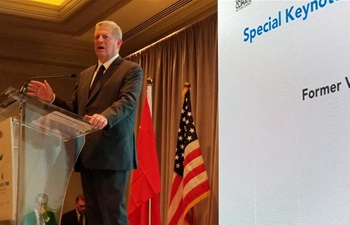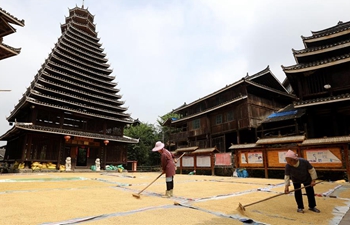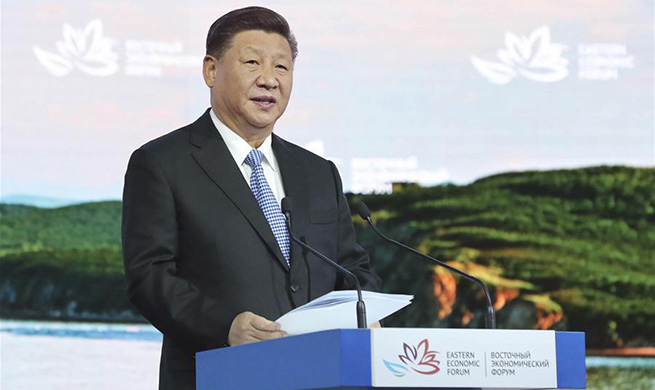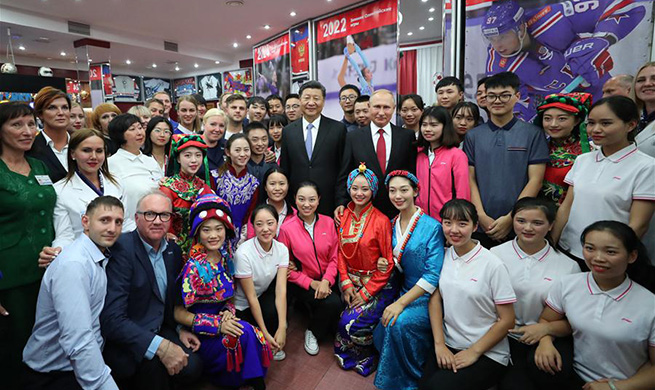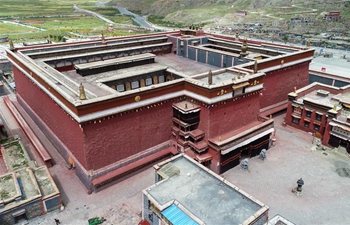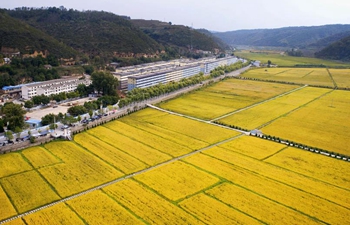NANNING, Sept. 14 (Xinhua) -- In a few years, former Deputy Prime Minister of Laos Somsavat Lengsavad envisions that people from the landlocked country at the heart of the Indochinese Peninsula will be able to travel to China by high-speed train.
As of July, over a third of the 414-km-long high-speed rail linking the two countries has been built. It is expected to be fully operational by the end of 2021.
"The Belt and Road Initiative (BRI) is changing the geographic status of Laos and boosting infrastructural construction along the railway," Somsavat said at the ongoing China-ASEAN Expo in the south Chinese city of Nanning.
Like Laos, member states of the regional bloc -- the Association of Southeast Asian Nations (ASEAN) -- have benefited over the past years from cooperation projects within the framework of the China-proposed BRI.
In Brunei, partnering with local network providers, Chinese telecommunications giant Huawei has helped build the country's first 3G and 4G mobile networks, providing services to more than 400,000 locals.
In Cambodia, China Datang Corporation has invested and built a hydropower plant and a 230-kV power transmission project.
"As Cambodia develops, we have a surging need for power consumption," Cambodian Prime Minister Samdech Techo Hun Sen said at a roundtable discussion with Chinese executives. "We appreciate the contributions Chinese companies such as Datang have made to the development of our country's power grid."
Seeing a synergy between the BRI and development plans of the region, Southeast Asian countries have welcomed China's contribution toward furthering ASEAN connectivity and integration through various transport and infrastructure projects.
"The enhanced cooperation between ASEAN and China under the BRI has not only benefited people's wellbeing in the region but also elevates the global status of ASEAN," said Gloria Macapagal-Arroyo, speaker of the House of Representatives of the Philippines.
Noting the natural link between the BRI and the Philippines' Build, Build, Build infrastructure program, Arroyo said the Southeast Asian country is eager to strengthen cooperation with China in technology, talent exchange and construction projects.
"China has always put cooperation with ASEAN high on its diplomatic agenda," said Zhai Kun, a professor of international relations at Peking University. "The BRI is conducive to elevating ASEAN to the central role in regional cooperation."
The magnetic effect of the BRI has also attracted countries outside the region to seek cooperative opportunities with China and member states of ASEAN.
Businesses from 19 countries along the Belt and Road, including Germany, Australia and Tanzania, have set up booths and showcased their products at this year's expo.
"It is a great honor for Tanzania to join the expo as a special partner," said Seif Ali Iddi, second vice president of Zanzibar, Tanzania, noting the huge potential of investing in his country.
"We hope enterprises from China and ASEAN can invest in Tanzania and jointly build the 21st Century Maritime Silk Road," Iddi said.





